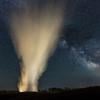"The greatness of a nation and its moral progress can be judged
by the way its animals are treated." ~Mahatma Gandhi
As my day goes tired as days end, and my long sometime death dying soon sometime for my world, my way is still on ward, always, tired, sooner, but focused and final, even with ticking days of less time, fewer words, less choice, content with what will come. Peaceful and kind with peace. Being able to look the other way, with no care, no worry. All what has been good, is what has counted. The Way of The Pack, in souled hearts of dogs, again so many years in time. Always waiting back for more time and never too focused on truth, is when dog owners remember. But in good time at the end of us, from our their problems, frustration, and think too much in their mind. Looking at the new people, but learning how to just be quiet from them, watch, listen and heard tales and time. Simply breathing. Being souls that move on, onward. All it is, is for us. Learn now.
Take the time to breath and be again quiet with your LGDs.
Some years ago, I lost my first hen to a coyote and I researched Livestock Guardian Dogs. I read that LGDs must be raised with and bonded to livestock, such as sheep or goats and should rarely be handled by humans. At the time, we lived on 5 acres, owned poultry, and our animals were family to us. On many levels, that advice simply did not work for us.
A few months later, I lost my second hen to a coyote and I looked again. This time I found Brenda Negri’s website. Her common sense approach to using Livestock Guardian Dogs on a homestead, and raised with families was a breath of fresh air, and a glimmer of hope for us, and my aspirations of raising rare birds.
I contacted Brenda, and talked with her extensively about her dogs, and their requirements. I have owned large dogs most of my adult life, and believed I could easily bring these gentle giant protectors into our home life. Brenda said they were different, but I did not appreciate just how different these dogs are, until I brought a pair of sibling pups home.
Actually, Brenda counseled us as to the value of owning a sibling pair, a concept I was not familiar with at the time, but have since come to appreciate. Once home with these pups, I quickly saw the wisdom of having at least two. They had each other to play with; they bonded to each other, and kept track of each other. To this day, if one of a pair needs assistance, the other is first to sound the alarm bringing us, and the rest of the pack to aid.
Brenda continues to be a valuable resource for us and our dogs: from training the pups to chickens; discouraging excessive, unnecessary barking; special health considerations for these large dogs; and integrating new adult dogs into a pack. Her advice is sprinkled with the admonition to observe the dogs, and how to respond to their behavior.
In the United States, current practices for raising and using Livestock Guardian Dogs runs the continuum from a hands-off feral dog living on substantial acreage with little to no human support to a pet dog, suitable, somehow, to life in the city. To find what is most appropriate for these very special dogs, we must look to their history. Guardian dogs have been bred, and selected over thousands of years to live with, and bond to their livestock, and also to live with and bond to their shepherd’s family.
This is the basis for Brenda Negri’s advice on the use, training and treatment of LGDs. The truth to this practice is the success of her many customers, myself among them. You do not command obedience from these dogs. You work alongside these dogs, as part of the team.
We now live on a 55-acre farm, with goats, chickens, cats, and of course our pack of beloved guardian dogs. We have two sets of two sibling pairs of Livestock Guardian Dogs to protect all of us. We are in the midst of cougar, bear, and hawk predators. We are surrounded by packs of coyotes. Neighbors have had losses; we have had none. At the same time our dogs can be safely approached by visitors, treated by vets, and petted by children.
We attribute our success to learning…. The Way of The Pack.
Barbara Judd
Froghaven Farm
Salkum, Washington
The Way of The Pack:
Understanding and Living With
Livestock Guardian Dogs
Brenda M. Negri















